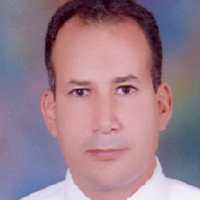
E.A. Zanaty
Work place: College of Computers and Information Technology/Information Technology Department, Taif, 888, KSA
E-mail: n.allam@tu.edu.sa
Website:
Research Interests: Computational Engineering, Medical Informatics, Image Compression, Image Processing, Medical Image Computing, Data Structures and Algorithms
Biography
Dr. E.A.Zanaty is an Associate Professor at Taif University, Saudi Arabia. He received his MSC Degree in computer science in 1997 from South valley University, Egypt. He completed his PhD. studies at TU-Chemnitz, Germany, during the period 2000-2003. Dr. Zanaty is an Editorial board of several journals and member of KACST and IAENG. His research interests are reverse engineering data reduction, medical image segmentation and reconstruction. In these areas he has published several technical papers in refereed international journals or conference proceedings.
Author Articles
New Region Growing based on Thresholding Technique Applied to MRI Data
By A. Afifi S. Ghoniemy E.A. Zanaty S. F. El-Zoghdy
DOI: https://doi.org/10.5815/ijcnis.2015.07.08, Pub. Date: 8 Jun. 2015
This paper proposes an optimal region growing threshold for the segmentation of magnetic resonance images (MRIs). The proposed algorithm combines local search procedure with thresholding region growing to achieve better generic seeds and optimal thresholds for region growing method. A procedure is used to detect the best possible seeds from a set of data distributed all over the image as a high accumulator of the histogram. The output seeds are fed to the local search algorithm to extract the best seeds around initial seeds. Optimal thresholds are used to overcome the limitations of region growing algorithm and to select the pixels sequentially in a random walk starting at the seed point. The proposed algorithm works automatically without any predefined parameters. The proposed algorithm is applied to the challenging application “gray matter/white matter” segmentation datasets. The experimental results compared with other segmentation techniques show that the proposed algorithm produces more accurate and stable results.
[...] Read more.Other Articles
Subscribe to receive issue release notifications and newsletters from MECS Press journals